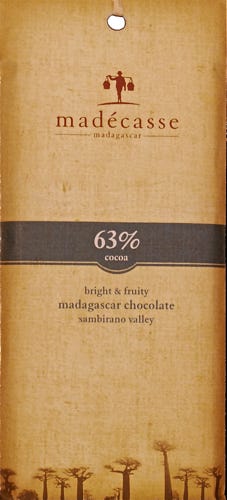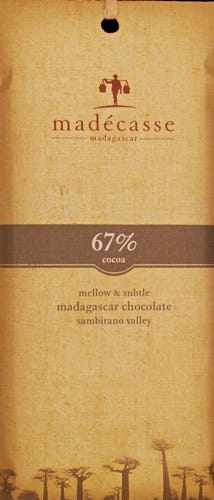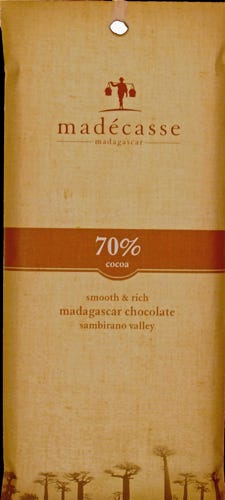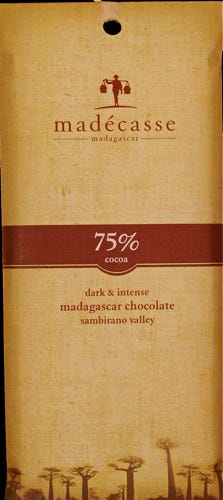A new chocolate -- hard to pronounce, easy to love!

You can take the boy out of Madagascar but you can't take Madagascar out of the boy.
Cofounder of Madécasse, Brett Beach
At least this is true of Brett Beach, a 35-year-old chocolate aficionado, now living in Oakland, California.
Brett and his business partner, Tim McCollum, were both Peace Corps volunteers working in Madagascar 1999 to 2001. The young men fell in love with the island (off the East Coast of Africa) and stayed beyond their Peace Corps contracts to find additional work in the field of NGO development.
The lads and their chocolate were brought to my attention by a good friend and napaman.com reader, Kathy Gracey, in Jacksonville, OR, who rose to the occasion when, in a recent column about Amano Chocolate, I asked readers to share any new, or favorite, boutique, or artisan, chocolates with which I might not be familiar. Kathy not only sent me a note about Madécasse, she even sent me a bar! Thanks, Kathy.
Chocolate partners Tom McCollum and Brett Beach
But back to the lads in Madagascar. “It was hard not to fall in love with the local products,” says Brett, pointing out that among the different finished products made in Madagascar, perhaps the most delicious is chocolate. “We really loved the chocolate made on the island,” he adds.
Drying cacao in Madagascar
When their tour of duty was up, Brent and Tim returned to the US armed with bars of a Madagascan chocolate which they have now named Madécasse, which just happens to be an antiquated French word for "Madagascar." (It’s pronounced mah-DAY-cas.)
As the pair of chocolate neophytes can’t afford the costs associated with obtaining organic status for their chocolate (even though it technically is…), they simply mark their bars and literature "organic growing conditions."
"We make sure that we have created a sustainable business for our farmer/growers and for ourselves," says Brett. "We also pay 1.4 times the going price for fair trade cacao to give our farmers a better return for their harvest.”
I asked Brett about the origin of cacao on the island of Madagascar and he said that the original stock was brought from Venezuela and, to his knowledge, 70% of the cacao harvested on the island are criollo/trinitario beans.
Madécasse is available in specialty gourmet stores across the country for about $5.99 a tablet. There are four ‘bars’, on which my tasting notes follow.

63% Dark Chocolate
Has a darkish, earthy aroma, revealing very little on the palate; has a short lift, or profile, and ends rather abruptly. If anything, butter is one of the more noticeable flavors. 88 points.

67% Dark Chocolate
Now we’re starting to “tawk chocolate.” This is a much more complex chocolate revealing layers of espresso, forest ferns and a few bark-y bottom notes. At the finish, the taste reminds me of the wax, red gum/teeth candies we used to eat as kids in the 50s, but I mean this in a pleasant way. You know the ones I mean? 89 points.

70% Dark Chocolate
Slow to release, but once it does, there are hints of dried cherry and brewed, black coffee. 90 points.

75% Dark Chocolate
This is the “Aha!” bar of the bunch, a delicious, compelling, rich, complex tablet; the chocolate has great mouthfeel, and there are lots of chocolate and coffee flavors throughout the chew and in the lingering finish. This is the Bravo bar of the set. 91 points.
While Madécasse chocolates do not have the acidity, complexity, or finish of some of the artisanal Venezuelan, or Ecuadorian, chocolates, which we have reviewed on this site, they’re not priced like them either.
For more information, or to order online, go to http://store.madecasse.com/

